
by DGR News Service | Oct 13, 2021 | Biodiversity & Habitat Destruction, Mining & Drilling, Toxification
This article originally appeared in Mongabay.
Editor’s note: We know less about the bottom of the sea than we know about outer space. We really require no scientific evidence to know that mining is bad for the environment wherever it occures. It should not be done on land, under the sea or on other planets. The ISA needs to reject the deep sea mining industry’s claims that mining for metals on the ocean floor is a partial solution to the climate crisis. As Upton Sinclair said, “it’s difficult to get a man to understand something when his salary depends on his not understanding it.” We can see this with the archeologist working for Lithium America in Thacker Pass. An interesting film to watch on the twisted relationship between science and industry is The Last Winter.
by Elham Shabahat
- The high cost of studying deep-sea ecosystems means that many scientists have to rely on funding and access provided by companies seeking to exploit resources on the ocean floor.
- More than half of the scientists in the small, highly specialized deep-sea biology community have worked with governments and mining companies to do baseline research, according to one biologist.
- But as with the case of industries like tobacco and pharmaceuticals underwriting scientific research into their own products, the funding of deep-sea research by mining companies poses an ethical hazard.
- Critics say the nascent industry is already far from transparent, with much of the data from baseline research available only to the scientists involved, the companies, and U.N.-affiliated body that approves deep-sea mining applications.
When Cindy Van Dover started working with Nautilus Minerals, a deep-sea mining company, she received hate mail from other marine scientists. Van Dover is a prolific deep-sea biologist, an oceanographer who has logged hundreds of dives to the seafloor. In 2004, Nautilus invited Van Dover and her students to characterize ecosystems in the Manus Basin off Papua New Guinea, a potential mining site with ephemeral hydrothermal vents teeming with life in the deep ocean.
Van Dover was the first academic deep-sea biologist to conduct baseline studies funded by a mining company, an act considered a “Faustian pact” by some at the time. Since then, more deep-sea biologists and early-career scientists aboard research vessels funded by these firms have conducted such studies. But partnering with mining companies raises some thorny ethical issues for the scientists involved. Is working with the mining industry advancing knowledge of the deep sea, or is it enabling this nascent industry? While there are efforts to disclose this scientific data, are they enough to ensure the protection of deep-sea ecosystems?
“I don’t think it’s sensible or right to not try to contribute scientific knowledge that might inform policy,” Van Dover said. With deep-sea mining, she added, “we can’t just stick our heads in the sand and complain when it goes wrong.”
More than half of the scientists in the small, highly specialized deep-sea biology community have worked with governments and mining companies to do baseline research, according to Lisa Levin, professor of biological oceanography at the Scripps Institution of Oceanography. Collecting biological samples in the deep sea is expensive: a 30-day cruise can cost more than $1 million. The U.S. National Science Foundation, the European Union and the National Science Foundation of China have emerged as top public funders of deep-sea research, but billionaires, foundations and biotech companies are getting in on the act, too.
Governments and mining companies already hold exploration licenses from the U.N.-affiliated International Seabed Authority (ISA) for vast swaths of the seafloor. Although still in an early stage, the deep-sea mining industry is on the verge of large-scale extraction. Mining companies are scouring the seabed for polymetallic nodules: potato-shaped rocks that take a millennium to form and contain cobalt, nickel and copper as well as manganese. Nauru, a small island in the South Pacific, earlier this year gave the ISA a two-year deadline to finalize regulations — a major step toward the onset of commercial deep-sea mining. The ISA is charged with both encouraging the development of the deep-sea mining industry and ensuring the protection of the marine environment, a conflict of interest in the eyes of its critics.
The Metals Company, a mining company based in Vancouver, Canada, formerly known as DeepGreen, recently said that it spent $75 million on ocean science research in the Clarion Clipperton Zone (CCZ) in the Pacific. The company has established partnerships with “independent scientific institutions” for its environmental and social impact assessments. Kris Van Nijen, managing director of Global Sea Mineral Resources said, “It is time, unambiguously and unanimously, to back research missions … Support the science. Let the research continue.” UK Seabed Resources, another deep-sea mining firm, lists significant scientific research that uses data from its research cruises in the CCZ.
The ISA requires mining companies to conduct baseline research as part of their exploration contracts. Such research looks to answer basic questions about deep-sea ecosystems, such as: what is the diversity of life in the deep sea? How will mining affect animals and their habitats? This scientific data, often the first time these deep-sea ecosystems have been characterized, is essential to assessing the impacts of mining and developing strategies to manage these impacts. Companies partner with scientific institutions across the United States, Europe and Canada to conduct these studies. But independence when it comes to alliances with industry is fraught with ethical challenges.
“If deep-sea science has been funded by interest groups such as mining companies, are we then really in a position to make the decision that is genuinely in the best interest of deep ocean ecosystems?” asks Aline Jaeckel, senior lecturer of law at the University of New South Wales in Australia. “Or are we heading towards mining, just by the very fact that mining companies have invested so heavily?”
The ethics of independent science
There’s a risk of potential conflicts of interest when scientists are funded by industry. While mining companies often tout working with independent scientists, in company-sponsored research vessels, “having somebody independent on board would be somebody who has presumably no financial affiliation in any way shape or form,” says Levin of the Scripps Institution of Oceanography.
When working with mining companies to collect baseline data, scientists are compensated through funding, which can be as high as $2.9 million, for their research labs. Many go on to publish journal articles based on data gathered on company-sponsored ships, advancing science in a relatively unknown realm where access is expensive and sparse.
While knowledge of the deep sea has advanced in recent decades, scientists are still trying to learn how these ecosystems are connected and the impact of mining over longer periods of time. The deep pelagic ocean — mid-water habitats away from the coasts and the seabed — is the least studied and chronically undersampled. There is also a dearth of deep-sea data for the Pacific, South Atlantic and Indian Oceans, where researchers (and mining companies) are increasingly focusing their attention.
For mining companies, science adds legitimacy, argues Diva Amon, a deep-sea biologist and director of SpeSeas, Trinidad and Tobago. “I think they recognize the value of science in appealing to consumers … and stakeholders as well.”
While it is common for scientific research to be funded by public agencies, when such funding dries up, scientists may be compelled to seek funding from or collaborate with interest groups. In other scientific endeavors like tobacco research, public health, climate science and clinical drug trials, there are policies to manage conflicts of interest, because history is rife with examples of industry influencing the design, outcome and communication of research in their favor. Some argue that even if industry-funded scientists publish research that is methodologically sound, industry influence on a broad scale can bias research results in imperceptible ways that erode trust in science.
Being funded by industry is not an issue if scientists are able to publish their research without restrictions, even if results are negative for the contractor, says Matthias Haeckel, a deep-sea biologist who is coordinating a mining impact project in the CCZ, funded by the European Union. “The question is if it’s up to this degree of independency, and that’s difficult to know from the outside … for me it’s sometimes a transparency issue. It’s not clear what the contracts with the scientists are.”
Deep-sea biologists have published research that does not work in the industry’s favor. A survey of megafauna diversity on the seafloor of the CCZ found that of the 170 identified animals, nearly half were found only on polymetallic nodules that are of interest to mining contractors. The study suggests that the nodules are an important habitat for species diversity. Biodiversity loss associated with mining is likely to last forever on human time scales, due to the slow rate of recovery in deep-sea ecosystems.
For some scientists, the key difference between being funded by an entity like the National Science Foundation versus the industry is control. Mining companies can ask scientists to sign nondisclosure agreements because companies in competition are concerned about the details of their sampling programs being made public, says Jeff Drazen, a deep-sea scientist at the University of Hawai‘i who is conducting research funded by The Metals Company. While there is a general understanding that scientists are free to publish their research, there can be embargos on when the research is released and requirements for consultation with the contractors.
“Many of them want you to sign an NDA before you can even talk to them. With the current contract we have with The Metals Company, none of our people have signed NDAs, and that was one of the reasons we decided to work with them,” Drazen says. “This is a common part of the business world to sign these NDAs — and that is antithetical to science, so that’s a cultural shift for most of us academics.”
The ISA has issued guidelines for baseline studies, but the decision of what and how much to sample rests on the company and scientists involved. “Scientists have to be careful not to necessarily be driven entirely by what the person funding the research wants,” says Malcolm Clark, a deep-sea biologist at New Zealand’s National Institute of Water and Atmospheric Research. “We’ve got to be very objective and make it very clear what’s required for a robust scientific project, and not just respond to the perceived needs of the client. Easy to say — very, very difficult to actually put into practice.” Clark also sits on the Legal and Technical Commission, a body within the ISA tasked with assessing mining applications.
‘Damned if you do, damned if you don’t’
Scientists are still trying to fathom the depths of our oceans, both to understand the sensitive ecosystems that thrive there, and the minerals that can be extracted from polymetallic nodules that have formed over millennia. Less than 1% of the deep sea has been explored. The interest in exploiting ocean minerals is coupled with advancements in scientific research. A study published earlier this year found that deep-sea research languished when this interest in exploitation waned in the 1980s and ’90s.
For baseline research, “if this fundamental first-time characterization of these ecosystems is going to be done, it should be done by experts, so there’s quality assurance,” Levin said in a lecture in 2018 on the ethical challenges of seabed mining. “You’re damned if you do and damned if you don’t at some level.”
There’s also the perceived conflict of interest: the intangible effects of working closely with industry representatives, where collecting data means going out together on a research vessel for several weeks at a time.
“We’re humans, we’re building relationships, and going to sea is a particularly bonding experience because you’re out there isolated and working together. I cannot imagine how that kind of relationship will not at some point interfere with scientific judgment,” says Anna Metaxas, a deep-sea biologist at the Dalhousie University in Canada, whose research has not been funded by mining companies. It’s not the collection of data that Metaxas is concerned about, “it’s what you do with the data and how you end up communicating to whom and when.”
“What I’m noticing with many PIs [primary investigators] working with mining contractors is that they don’t want to bite the hand that feeds them,” says Amon. “As a result, they are less willing to speak to the public and the press, which is really unfortunate.”
The Wall Street Journal reported that according to two people familiar with the matter, Jeff Drazen was facing the possibility of having his funding revoked after publicly criticizing seabed mining. In an interview with Mongabay, Drazen declined to comment on the matter.
Other prominent scientists who work with mining contractors did not respond to interview requests for this article.
The trouble with DeepData
Since the ISA started giving out exploration contracts, the data that contractors collected was kept in a “black box” for more than 18 years, hidden from the world with the key in the hands of the contractors, the scientists who conducted this research, and a few people within the ISA. Because academics are involved, some of this data and analysis would eventually become available as peer-reviewed scientific literature.
In 2019, the ISA developed DeepData, a public database where contractors are required to submit the baseline data they collect. But the only data available to the public is environmental data. Resource data, particularly related to polymetallic nodules that are of interest to mining contractors, is off-limits and remains proprietary. The distinction between environmental and resource data is a “gray area,” according to Clark. What is deemed confidential is up to the mining contractors and the secretary-general of the ISA.
The nodules, rich in metals such as cobalt and nickel, are a breeding ground for deep-sea octopuses, and home to new species of deep-sea sponges, diverse animals and microbes not found in surrounding waters or sediments. The communities of organisms that rely on these nodules and sediment vary with the abundance of the nodules.
“Miners are going after the components of the habitat,” says Craig Smith, a deep-sea scientist at the University of Hawai‘i. “But we can’t really assess the abundance of that habitat without knowing the abundance of the nodules.” In fisheries, for example, industry-sensitive data is aggregated to help with management decisions, but such data is considered proprietary for the nodules.
The metallic content of these nodules is also a trade secret, though the information could be relevant for environmental assessments. Toxicity from broken-down ores could be created in the sediment plumes or wastewater that’s reinjected in the water column as a byproduct of the mining process, potentially affecting fish and other biodiversity. Where exactly in the water column mining companies will discharge the wastewater is also confidential.
Drazen, whose research (funded by The Metals Company) is looking at mining impacts on the midwater column, says the mining process will discharge mud and chemicals. “There’s a whole suite of potential effects on a completely different ecosystem above the seafloor. We depend upon the water column ecosystem … a lot of animals we like to eat … forage on deep-sea animals,” he says. The discharge of metals and toxins over potentially large areas could contaminate seafood. A recent study suggests that elements in discharge waters could spread further than mining areas, affecting tuna’s food, distribution, and migration corridors. There is increasing evidence that tuna, swordfish, marine mammals and seabirds rely on deep-sea fish, and foraging beaked whales could also be diving down to the seafloor in search of food.
DeepData is experiencing teething problems. A workshop to assess biodiversity for the CCZ in 2019 found inconsistencies in the data, making it difficult to synthesize across the CCZ. Different sampling methods can make it difficult to provide a cohesive picture.
“There’s still a bit of work in progress with DeepData. But certainly, the willingness is there to have it serving people with appropriate needs,” Clark says. “We do still need to be careful of the commercial confidentiality as it relates to the geochemical information in particular.”
The ISA did not respond to requests for comment.
An opaque decision-making body
The structure of the ISA, particularly its de facto decision-making body, the Legal and Technical Commission, is also fraught with transparency challenges. The Legal and Technical Commission assesses mining applications, which currently involve exploration contracts for the deep sea, but all of its meetings are held behind closed doors. The commission is composed of 30 experts nominated by their countries — some by governments that also hold exploration contracts — with only three deep-sea biologists on board.
“Even if some mining companies might genuinely fund what might be considered independent science, we still end up with a problem that the decision about whether or not to mine and the decision around environmental management of seabed mining rests entirely on data that is provided by the mining companies,” says Jaeckel of the University of New South Wales. “There is a lot of trust placed on mining companies.” There is no way to independently verify this data either, because deep-sea science is expensive, she adds. The degree to which companies are accurately reporting the baseline data to the ISA is not clear.
The commission is the only body within the ISA that sees the content of contractor’s applications, so the baseline data that contractors submit to be able to monitor impacts are only visible to the commission. There is an audit of the scientific data by the commission which reviews a contractor’s confidential annual reports. And then there’s public scrutiny of environmental impact assessments by NGOs.
Nauru Ocean Resources Inc., a wholly-owned subsidiary of The Metals Company, is “going to have to produce something really good,” says Clark of the company’s upcoming environmental impact assessment. Clark is a deep-sea biologist who was nominated to sit on the commission by New Zealand, which does not hold an exploration contract with the ISA. “Otherwise, the whole industry’s potential will be affected because it will taint the view of public and NGOs as to what contractors are doing — are they doing a serious and good job at the underlying research or are they trying to cut corners and push the ISA into making hasty decisions?”
In 2017, the commission approved an exploration contract for the Lost City, a metropolis of hydrothermal vents in the Atlantic Ocean that the Convention of Biological Diversity has recognized as an ecologically or biologically significant marine area that should be conserved. Marine scientists issued an open letter to the ISA to turn to independent scientists when evaluating requests for mineral exploration, and some have long called for open meetings and an independent scientific committee to advise the commission. Scientists are now petitioning for a pause on deep-sea exploitation out of concern about impacts on the marine environment.
That baseline research with industry might enable mining is “a very naïve perspective,” adds Smith of the University of Hawai‘i. “My gut feeling is that mining will go forward. It would be really wise to just permit one operation to go forward initially and monitor the heck out of it for 10 years. That would make a lot more sense than permitting multiple operations without even knowing what the real footprint will be in terms of disturbance.”
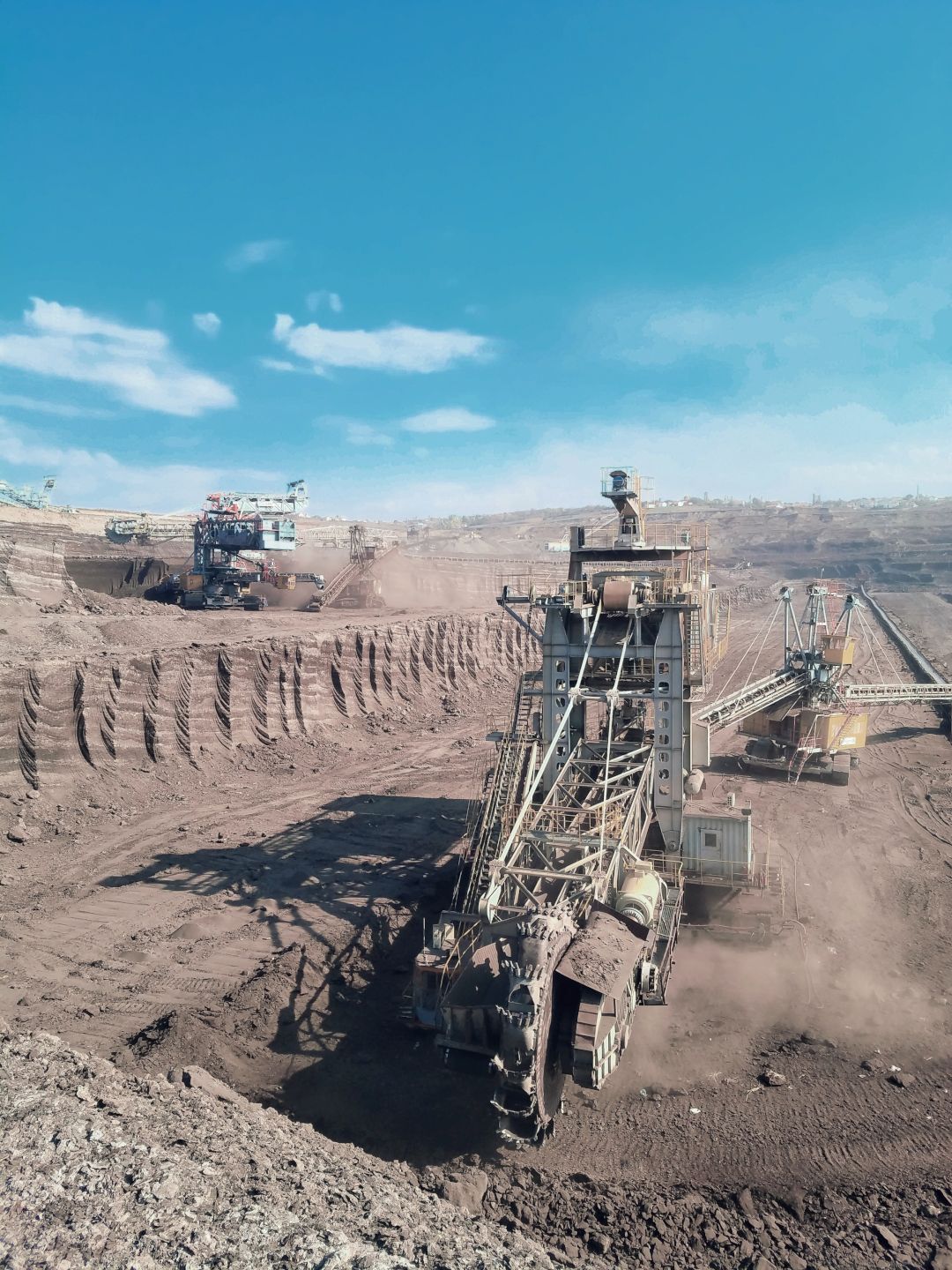
by DGR News Service | Jul 1, 2021 | Education, Lobbying, Mining & Drilling, Movement Building & Support
This article originally appeared in The Ecologist. Republished under Creative Commons 4.0.
Editor’s note: It’s very important to be clear about the destructiveness of mining and organize resistance against governments and cooperations. While this article is only very cautiously mentioning degrowth, scaling back, and recycling as “solutions”, we believe that societies have to reject and give up industrialism as a whole and immediately start ecological restoration everywhere at emergency speed and scale.
By Diego Francesco Marin
‘Green mining’ is an oxymoron that is gaining traction in the EU and pushes a risky narrative about an environmentally destructive sector.
Mining dominates, exploits and pollutes, suppressing other ways of living with the land. In low-income countries, it can be deadly. Activists, civil society and grassroots movements have been loud and clear about the dangers posed by the mining sector, yet few politicians seem to listen. In the European Union, the European Commission and mining operators are clearly aware of the issues. But unless your community has been targeted as the next mining project to supposedly meet the EU’s climate goals, you are probably not aware of how destructive mining can be.
As part of its Raw Materials Action Plan, the Commission is striving to create the conditions for more mining in Europe by convincing the public that mining can be “green.”
Foolish
Last month, the Portuguese presidency of the EU organised a European conference on so-called green mining in Lisbon. Only one civil society organisation, the EEB, was invited to what had all the appearances of an industry convention rather than a green policy forum.
However, outside the venue, over a hundred activists from grassroots movements and citizens organisations protested the conference and the government-backed lithium mining projects in northern Portugal- despite COVID restrictions.
To gain thesocial license to operate, politicians and industry are challenging previous civil society backlashes against mining projects by equating mining with renewable technologies. Even raising concerns over the toxic fallout of continuous extractivism is deemed foolish.
When communities fight for their right to decide their futures, they are labelled as suffering from a case of nimbyism. Portuguese Secretary of State for Energy, João Galamba even went so far as mentioning that “those who are against mines are against life.”
This scramble to mine is about lucrative business and actually undermines the energy transition. New low-carbon infrastructure needs to be built to enable the move away from fossil fuels, which means money.
Lithium
>Lithium, for example, is one of the most sought-after metals for low-carbon technologies and Europe is almost 100 percent dependent on battery-grade lithium from third countries, especially Chile.
An often-cited figure is that, by 2030, under ‘business as usual’, Europe will need around 18 times more lithium and up to 60 times more by 2050. Therefore, to make the switch to renewable technologies and be competitive, Europe wants to scale up supply to avoid bottlenecks, right in its own backyard.
But this strategy comes with serious concerns. The mountainous Barroso region, for example, sits on Western Europe’s largest lithium deposits but is also located 400 metres from the Covas do Barroso community, in the municipality of Boticas.
Even the Boticas mayor, Fernando Queiroga has spoken openly against the project over pollution, water and environmental worries. He also fears the negative impact it would have on the region’s agricultural, gastronomy and rural tourism sectors.
According to Savannah Resources, the mining operator behind the Minas Do Barroso, the mine would generate €1.3 billion of revenue over its 15-to-20-year lifetime.
Overconsumption
In terms of helping the EU meet its demand, the project would only provide 5 to 6 percent of Europe’s projected lithium requirement in 2030.
A study conducted by the University of Minho for Savannah Resources found that the lithium output of this mine would be “insufficient to meet the demand for lithium derivatives for the production of batteries in Europe”.
This region is one of only seven in Europe to make the Food and Agriculture Organisation’s list of Globally Important Agricultural Heritage Systems. Communities here use “very few surpluses where]the level of consumption of the population is relatively low compared to other regions in the country” as the FAO’s website indicates.
In the age of overconsumption driving the ecological crisis, it is ironic that low-impact communities are targeted for green growth pursuits.
If the Mina do Barroso project is allowed to proceed, the region’s proud agricultural heritage would be undermined and would surely lose its international recognition.
Frenzy
With 30 million additional electric vehicles planned to hit Europe’s roads by 2030, it should come as no surprise that communities on the ground do not want their land to become the next sacrifice zone to feed the EV frenzy.
In Europe, there are three other proposed mining projects where environmental concerns have also been raised, including in Caceres, Spain.
The Iberian Peninsula is a major target for mining companies. In Spain, there are around 2,000 potential licenses for new mining projects. In the case of Portugal, 10 percent of the country’s territory is already under mining concessions.
In the northern Portuguese regions, the situation is troubling amid concerns that open-pit mines may even be allowed near protected areas, as in the case of Serra d’Arga. The Mina do Barroso project is now undergoing public consultation for the environmental impact assessment.
Despite government and industry rhetoric that public participation will be respected, and the needs of local communities will be met, local organisations and activists are not convinced. In January 2021, an NGO submitted an environmental information request to the Portuguese environment ministry, but no access was granted.
Denial
The same request was sent in March to Savannah Resources, but the company also refused.
Although the Commission for Access to Administrative Documents (CADA) issued a report stating that the environmental information that had been requested should be made immediately available, the Portuguese authorities decided to ignore the request.
Only some documents were made available during the public consultations and nearly three weeks after the consultations started.
The lack of access to information kept civil society and local communities in the dark and they lost around 3 precious months.
For the past month, they have had to scrutinise more than 6,000 documents. A formal complaint was submitted in the context of the Aarhus Convention, which protects the right of access to environmental information, over claims of deliberate denial of access to information.
Courts
The case is already before the Portuguese courts and the public prosecutor. The end of the public consultation period for the EIA was to end on June 2nd, the same day of the launch of the Yes to Life, No to Miningjoint position statement to the European Commission, but public pressure over irregularities forced the Portuguese authorities to extend the consultation period to July 16th.
target=”_blank” rel=”noopener”Green mining relates to the belief that we can decouple economic growth from environmental impacts, however, this mindset ignores a larger issue and will ultimately have irreversible consequences on the environment.
Perhaps instead of putting such emphasis on the supply of lithium or other raw materials, we can take a look at the demand. For example, by prioritising circularity over primary resource extraction, we can greatly reduce our need to mine more resources.
Political action to limit global warming is necessary and urgent. This means that we need to find the quickest paths to decarbonisation. But we must do it in less materially intensive ways. We can build cities that are less car-dependent, increase public transport, promote walking or enhance micro e-mobility.
Cycling, for example, is ten times more important than electric cars for reaching net-zero cities. Other solutions include urban mining initiatives that move us toward more circular societies. In an inspiring example from Antwerp, 70 creative makers gather the waste from the city and turn them into a wide variety of products: lamps from old boilers and chairs from paper and sawdust for a whole jazz club.
Solutions
The solutions exist, we just need the political will.
By making the most of the resources we have, European cities can greatly reduce the impact that they create for European rural communities and in low-income countries where most of the mining projects are slated to take place.
However, broader policy measures are also needed. For starters, the EU should agree on creating a headline target to cut its material footprint and continue to promote measures on targeting energy efficiency, recycling, material substitution, use of innovative materials, and the promotion of sustainable lifestyles.
Another way to do this is to look at the energy transition through an environmental justice lens. Granting communities, the right to say no to mining projects by taking inspiration from already enshrined protocols in international law as in the case of Free, Prior and Informed Consent for Indigenous Peoples, the brunt of the energy transition will not have to be put on low-impact communities around the world.
This can address the current imbalance of power between mining companies, governments and communities and the future EU horizontal due diligence law can offer such opportunity. Banning mining projects from taking place within or near protected areas is a necessary step forward.
Living
So can mining ever be green? Maybe that is not the right question. We should instead ask, how do we change the way our societies operate?
How can we create well-being economies? Or perhaps more ambitiously, how do we move away from the need to grow the economy?
Only then can we figure out how much we need to mine. After all, decent living does not have to, and must not, cost us the earth.
This Author– Diego Francesco Marin is a policy officer at the European Environmental Bureau.
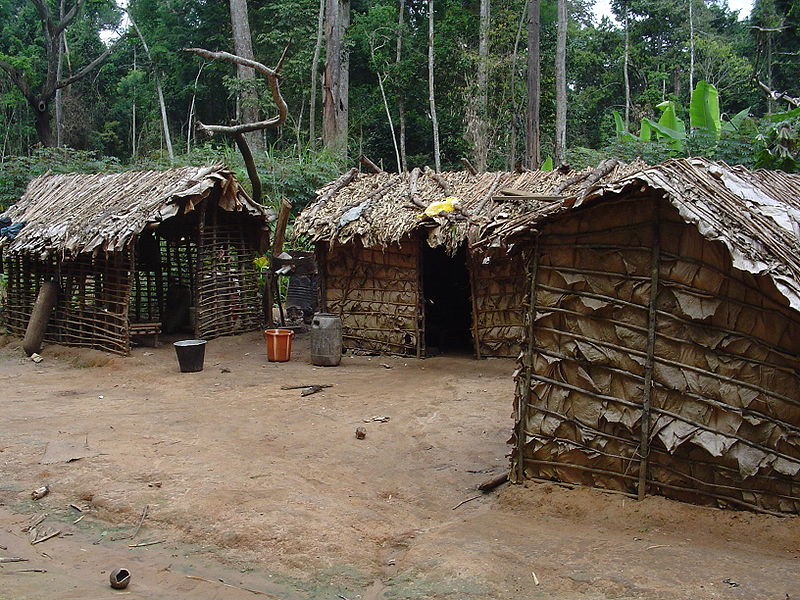
by DGR News Service | May 12, 2021 | Alienation & Mental Health, Colonialism & Conquest, Human Supremacy, Indigenous Autonomy, Listening to the Land, Repression at Home, White Supremacy
This article, originally published on Resilience.org, describes the dangers of the modern, western conception of “untouched wilderness” and its drastic consequences for the last human cultures still inhabiting dense forests. Calling the forests their home for millenia, they are not only threatened by mining and logging companies, but by modern “environmental” NGO’s and their policies of turning forests into national parks devoid of human presence, pushing the eviction of their ancestral human inhabitants.
Featured image: Pygmy houses made with sticks and leaves in northern Republic of the Congo
One of the oldest myths impressed into the minds of modern people is the image of the wild, virgin forest.
The twisted, gnarled and dense trees, complete with ancient ferns, silent deer and patches of sunlight through gaps in the canopy. In this vision there are no people, and this is a striking feature of what we mean by ‘wilderness’. We have decided that humans are no longer a natural part of the wild world. Unfortunately, these ideas have real world consequences for those remaining people who do call rainforests and woodlands their homes. Approximately 1,000 indigenous and tribal cultures live in forests around the world, a population close to 50 million people, including the Desana of Colombia, the Kuku-Yalanji of Australia and the Pygmy peoples of Central Africa and the Congo. This is a story about those people of the Congolese forests, about how their unique way of life is threatened by the very people who should be defending them and how rainforests actually thrive when humans adapt to a different way of life.
The Democratic Republic of Congo has to be amongst modernity’s greatest tragedies.
Almost no-one knows that the ‘Great African War’, fought between 1998 and 2003, saw 5.4 million deaths and 2 million more people displaced. Very few can grasp the bewildering complexity of armed groups, of the ethnic and political relationships between the Congo and Rwanda or the sheer scale of the conflict, which at its height saw 1000 civilians dying every day. And yet this is also a country of staggering beauty, a sanctuary to the greatest levels of species diversity in Africa. It is home to the mountain gorilla, the bonobo, the white rhino, the forest elephant and the okapi. Roughly 60% of the country is forested, much of it under threat by logging and subsistence farming expansions. The Congolese Pygmy peoples have been living here since the Middle Stone Age, heirs to a way of life over 100,000 years old. A note here on naming – the term Pygmy is considered by some to be offensive and the different people grouped under the title prefer to call themselves by their ethnic identities. These include the Aka, the Baka, the Twa and the Mbuti. The Congolese Pygmy people are grouped under the Mbuti – the Asua, the Efe and the Sua. In general these all refer to Central African Foragers who have inherited physical adaptations to life in the rainforest, including shortened height and stature.
The Mbuti people are hunters, trappers and foragers, using nets and bows to drive and catch forest animals. They harvest hundreds of kinds of plants, barks, fruits and roots and are especially obsessed with climbing trees to source wild honey, paying no heed to the stings of the bees. In many ways theirs is an idyllic antediluvian image of carefree hunter-gatherers, expending only what energy they need to find food and make shelters, preferring to spend their lives dancing, laughing and perfecting their ancient polyphonic musical tradition. Of course, this is an edenic view and the reality of their lives is much more complex and far more tragic, but it is worth highlighting the key environmental role they play as stewards and denizens of the forests. The Mbuti have been in the Congolese forests for tens of millennia, living within the carrying capacity of the land and developing sophisticated systems of ecological knowledge, based on their intimate familiarity with the rhythms and changes of the wildlife and the plants. Despite other groups of hunter-gatherers eating their way through large herds of megafauna, the Mbuti can live alongside elephants, rhinos and okapi without destroying their numbers.
In spite of this, the Mbuti and other Pygmy peoples have been attacked and evicted from their forests for decades.
In the 1980’s, the government of Congo sold huge areas of the Kahuzi Biega forest to logging and mining companies, forcibly removing the Batwa people and plunging them into poverty. To this day, many of their descendents live in roadside shanties, refused assistance from the State, denied healthcare and even the right to work. Many have since fled back to the forests. Alongside the mining and logging companies, conservation charities have been targeting the Baka peoples for evictions. In particular the World Wildlife Fund (WWF) has been lobbying to convert the Messok Dja, a particularly biodiverse area of rainforest in the Republic of Congo, in a National Park, devoid of human presence. This aggressive act of clearance is rooted in the idea that a ‘wilderness’ area should not contain any people, thus rendering the original inhabitants of the forests as intruders, invaders and despoilers of ‘Nature’. The charity Survival – an organisation dedicated to indigenous and tribal rights – has been campaigning for WWF to stop their activities. In particular Survival has successfully documented numerous abuses committed by the Park Rangers, whose activities are funded by WWF and others:
“notwithstanding the fact that Messok Dja is not even officially a national park yet, the rangers have sown terror among the Baka in the region. Rangers have stolen the Baka’s possessions, burnt their camps and clothes and even hit and tortured them. If Baka are found hunting small animals to feed their families they are arrested and beaten”
Outside of the forest, the Baka and other Pygmy peoples face widespread hostility and discrimination from the majority Bantu population.
Many are enslaved, sometimes for generations, and are viewed as pets or forest animals. The situation is no better within the Democratic Republic of Congo (DRC), where the endless cycles of violence have seen the most shocking abuses against the Mbuti populations. Even in the most peaceful areas, park rangers regularly harass and abuse Mbuti hunters and villagers, illegally cutting down trees for charcoal or shooting animals for meat. In some places the Batwa people have formed militias, often armed with little more than axes and arrows, to defend themselves against slaving raids by the neighbouring Luba people.
The worst events for the Mbuti people in recent years began during the Rwandan genocide, where the Hutu Interahamwe paramilitaries murdered over 10,000 Pygmies and drove a further 10,000 out of the country, many of whom fled into the forests of the DRC. Later, between 2002 and 2003, a systematic campaign of extermination was waged against the Bambutis of the North Kivu province of DRC. The Movement for the Liberation of Congo embarked on a mission, dubbed Effacer le tableau – ‘cleaning the slate’, which saw them kill over 60,000 Pygmies. In part this was motivated by the belief that the Bambuti are subhumans, whose flesh possesses magical powers to cure AIDS and other diseases. Many of the victims were also killed, traded and eaten as bushmeat. Cannibalism against the Pygmy peoples has been reported throughout the Congolese Civil Wars, with almost all sides engaging in the act.
Unsurprisingly under these pressures, the Mbuti and other groups have been displaced, broken up and scattered throughout Central Africa. In part this has always been the intention of these campaigns, for the Congo region is not an isolated backwater of the modern world, but an integral part of the material economy of advanced modernity. In particular Central Africa has been cursed with an abundance of precious and important metals and minerals, including: tin, copper, gold, tantalum, diamonds, lithium and, crucially, over 70% of the world’s cobalt. The intensive push for electric vehicles (EVs) by the EU and the USA has seen prices for battery components skyrocket. Cobalt in particular reached $100,000 per tonne in 2018. Tantalum is also heavily prized, as a crucial element for nearly all advanced electronics and is found in a natural ore called coltan. Coltan has become synonymous with slavery, child labour, dangerous mining conditions and violence. Almost every actor in the endless conflicts in DRC have been involved in illegally mining and smuggling coltan onto the world market, including the Rwandan Army, who set up a shell company to process the ore obtained across the border. Miners, far from food sources, turn to bushmeat, especially large primates like gorillas. An estimated 3-5 million tonnes of bushmeat is harvested every year in DRC, underlining the central role that modern electronic consumption has on the most fragile ecosystems. In this toxic mix of violent warlordism, mineral extraction, logging, bushmeat hunting and genoicide, the Mbuti people have struggled to maintain their way of life. Their women and children end up pounding lumps of ore, breathing in metal dusts, they end up as prostitutes and slaves, surviving on the margins of an already desperate society.
In Mbuti mythology, their pantheon of gods are directly weaved into the life of the rainforest.
The god Tore is the Master of Animals and supplies them for the people. He hides in rainbows or storms and sometimes appears as a leopard to young men undergoing initiation rites deep in the trees. The god of the hunt is Khonvoum, who wields a bow made of two snakes and ensures the sun rises every morning. Other animals appear as messengers, such as the chameleon or the dwarf who disguises himself as a reptile. These are the cultural beliefs of a people who became human in the rainforest, adapted down the bone to its tempos and seasons. They are a part of the ecosystem, as much as the gorilla or the forest hog. Their taboos recognise the evil of hunting in an animal’s birthing grounds, or the importance of never placing traps near fresh water. Breaking these results in a metaphysical ostracism known as ‘muzombo’, a kind of spiritual death and sometimes accompanied by physical exile from the village. As far as their voice has counted for anything under the deluge of horror that modernity has unleashed upon them, they want to be left alone, to hunt and fish in their forests, to live close to their ancestors and to raise their children in peace and safety.
The expansion of the ‘Green New Deal’ and the rise of ‘renewable’ industrial technologies may be the death knell for these archaic and peaceful people.
Make no mistake, these green initiatives – electric vehicles, wind turbines, solar batteries – these are actively destroying the last remaining strongholds of biodiversity on the planet. The future designs on the DRC include vast hydroelectric dams and intensive agriculture, stripping away the final refuges of the world. Now, more than ever, the Mbuti and other Pygmy peoples need our solidarity, an act which can be as simple as not buying that next iPhone.
Editor’s note on the last sentence of this otherwise well-written article: Personal consumer choices are no means of political action and will not save the planet. If you don’t buy the next iPhone someone else will. The whole globalized industrial system of exploitation which makes iPhones possible in the first place has to be stopped.
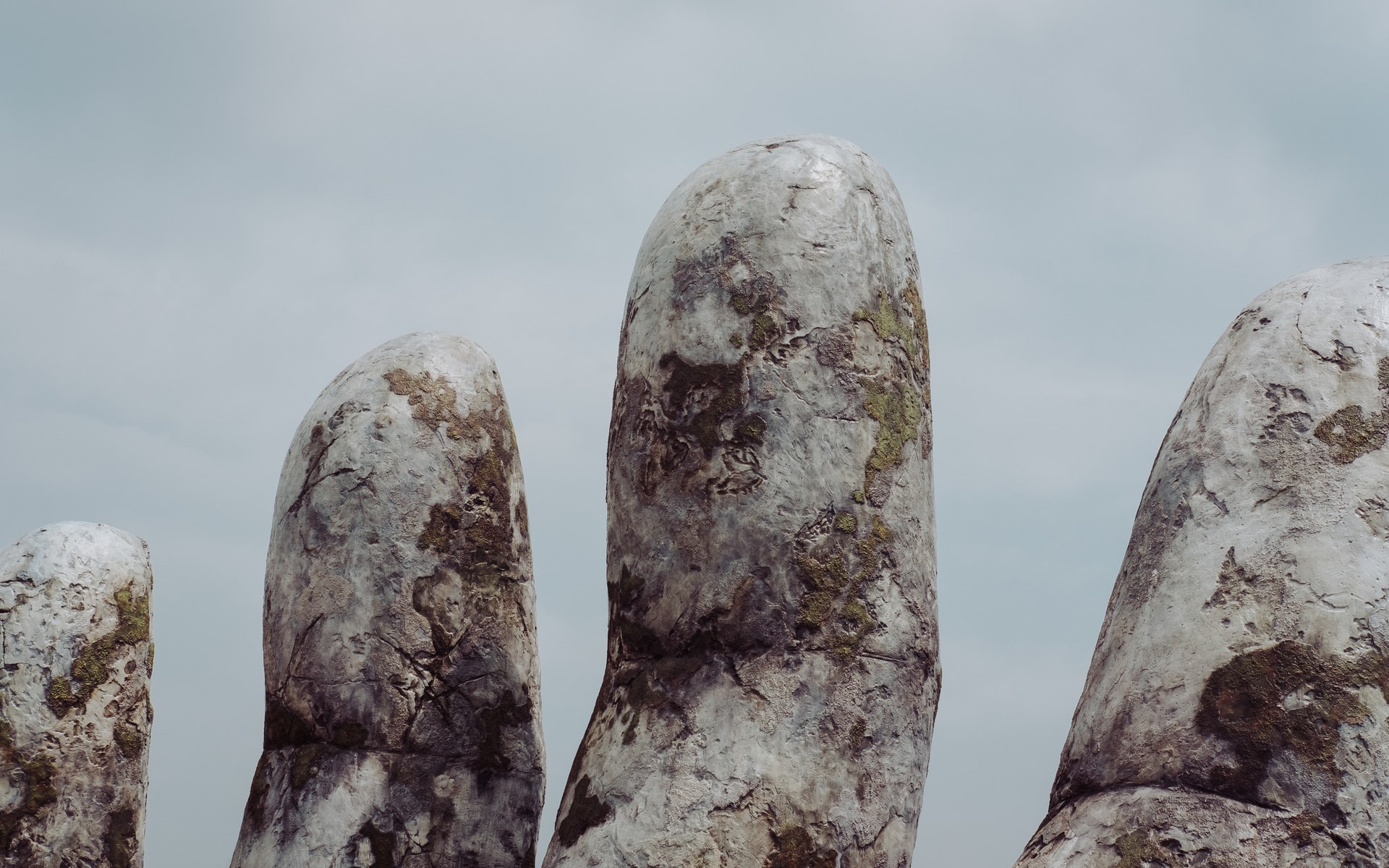
by DGR News Service | May 9, 2021 | Biodiversity & Habitat Destruction, Colonialism & Conquest, Education, Mining & Drilling, Strategy & Analysis, Toxification
By Straquez
The Colonial Years
Of course, Mexico has been in the front line of atrocities and destruction that come out of mining. Mexico is a land blessed with wide biodiversity that includes minerals that have caught the attention of foreign companies who then act as the machinery to do what this industrial culture does best –converting the living into the dead. High revenue for the company stakeholders, negative benefit for the inhabitants and nothing but endless destruction for the land.
It is said that Aztecs used to embellish and protect their bodies with jewelry, such as necklaces with charms and pedants, armlets, bracelets, leg bracelets, and rings. They would also use tools and vases fabricated with precious metals like gold and silver. These metals were found in deposits located on the surface and not underground like nowadays, this allowed the usage of such mineral resources without much effort or effect.
In 1521, Tenochtitlan, the Aztec capital, was taken over by the Spanish army consolidating Mexico’s Conquest. From then on, mining as an industry started in Mexico as Spaniards started to exploit places where mineral deposits could be located. Mining was carried out mostly in the North and Center of what is now modern day Mexico. Many important mineral deposits started to be discovered in places that later would become famous as they would generate wealth (for whom?) and human settlements. It was only a matter of time before the land subject to mining would be turned into cities such as Guanajuato, San Luis Potosi, Zacatecas, Taxco, Chihuahua and Durango.
Mines kept spreading and mining created many jobs and wealth (I hate to be repetitive, but whose wealth?). Is there even a mention of all the evils done to the indigenous land and people? Not at all, the history of mining is portrayed as progress, as an unquestionable good thing, as a victory and in no terms as a defeat or loss. The whole History of Civilization is pretty much like that, now that I think of it.
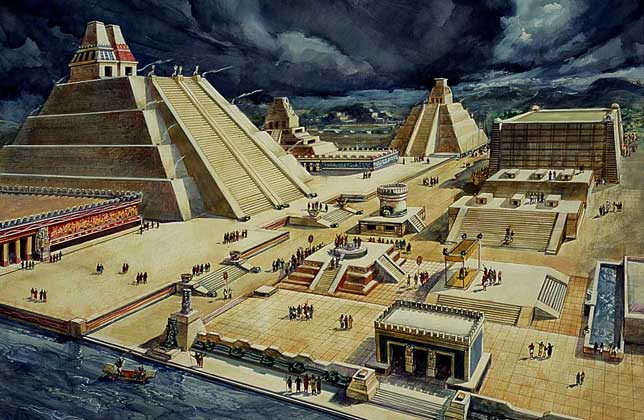
After Independence
When the Independence movement of Mexico started in 1810, mining projects were negatively affected and had to be stopped. It was not until 1823 when the movement ended that mining activity was restarted. Remember that I mentioned my surname Straffon being from Cornwall, England? Well, it was precisely during these years that the British Real del Monte Company was established thanks to English capital. This company provided both technology and workforce, some of it straight from Cornwall to re-establish silver mines located in Real del Monte, Hidalgo. 1,500 tons of equipment including 9 steam engines with their large boilers, 5 for pumping, 2 for crushing ore and 2 for use in powering saw mills; various pumps; large cast iron pipes to connect the pumps to be placed at the bottom of the mines with the surface. And so started the rebuilding and modernization of the district’s mining industry. The Cornish miners had brought the Industrial Revolution to Mexico.
By the beginning of the 20th century, Mexico was entering a major political transformation as new laws and codes were created. During Porfirio Diaz’ administration, for example, most of the railroad infrastructure was built all through the country, focusing on the main mining centers that were already established. Then the American corporations showed up offering the means for better extraction as mines during the times of Nueva España were certainly used, but could not be exploited to their maximum because Spain lacked the technology and resources to do so.
The Fresnillo Company, Mazapil Cooper Co., Peñoles Mining Co., and Pittsburg & Mexico Tin Mining Co. were some of the companies looking to make a profit out of Mexico’s mines. Parallel industries started to rise, the economy diversified and the country’s elite dreamed of Mexico being on its way to becoming a world economy. Metallurgical processes were improved with maximum return on capital and mineral processing efficiency as the main goal. The bonanza would cease somewhat in the 1960s when the mining industry was nationalized and mine administration passed to the charge of Mexican professionals.
Then came NAFTA, and in 1992 mining laws were modified substantially in order to accommodate the demands of big national and transnational corporations. Compared to the prior 300 years, production of gold and silver doubled even though several communities resisted the exploitation. Social and environmental damage increased substantially as a consequence due to legal impunity and the ability of the mining organizations to trample over human rights. The Mexican Mining Law of 1992 is a unique and unconstitutional piece of legislation, and rides roughshod over earlier laws which allowed for judicial challenges and which consequently made it difficult for companies to carry on their business with impunity. The solution of the mining organizations was, of course, to create a whole web of corruption that extends to the three branches of government. We are still living the influence of NAFTA until this very day. Business as usual.
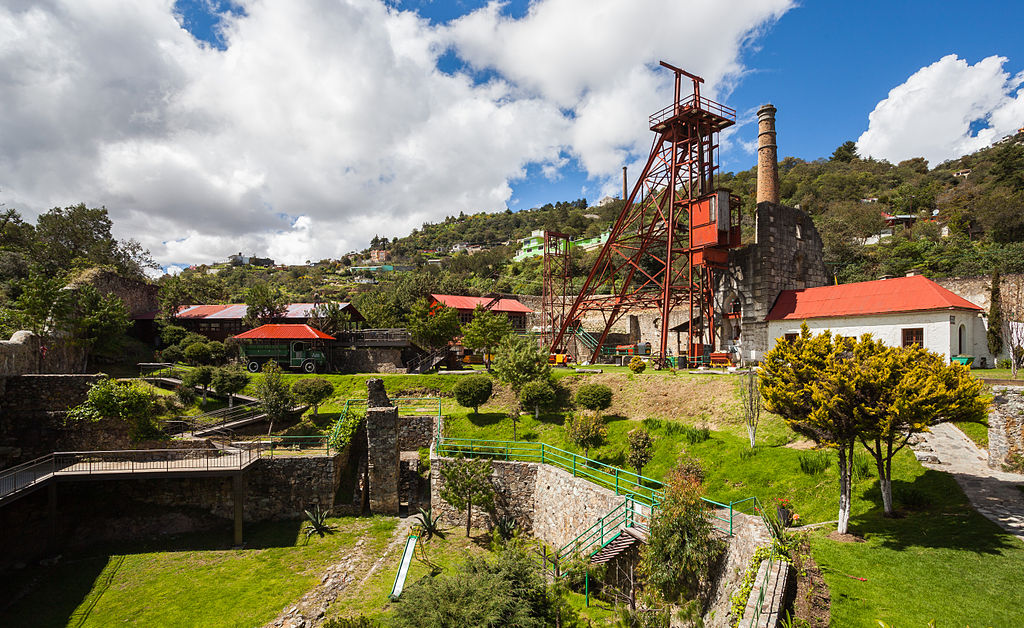
Keep on Digging
Doctor María Teresa Sánchez Salazar has set out very interesting mine “conflict maps” which consider many parameters including land conflict, environmental conflict, social conflict, labor conflict or a combination of those factors. Data shows that 75% of these conflicts have to do with land, that is, land grabs by the mining companies or due to environmental conflicts, and almost 70% of them happen in open-pit mines. Another interesting number – 60% of the conflicts have involved foreign company owned mines.
She adds that there are places where conflict started due to land grab and the subsequent leasing to mining companies and the implementation of ways to displace people from their native lands. Of a total of 181 natural areas, 57 have been leased for mining. Eight of them focus more than 75% of the surface to this activity. Twenty of them have at least 93% of their surface leased. One example is the Rayón National Park in Michoacan, its land is practically 100% leased for mining as well as Huautla Mountain Range that is between Morelos, Puebla and Guerrero.
Safety is also an issue for the Mexican mining sector. There are powerful cartels that have quite an influence in the entire country, including mining states such as Sonora, Chihuahua, Sinaloa and Guerrero. Mines have been object of many armed robberies that have increased during the COVID-19 pandemic. Extortion, threats and employee kidnapping have been the most common crimes reported by the mining companies.
If this was a Robin Hood kind of deal then I should certainly support it, but in the end workers are the most affected, operations are seldom slowed down and the exploitation just does not stop. If the criminal gangs were to take over, not much would change as, let’s be honest, both companies and cartels pretty much operate the same way but at a different scale.
Bacadéhuachi
In times prior to the year 1600, this area was inhabited by Opata indigenous settlements. In the year 1645 a mission named San Luis Gonzága de Bacadéhuachi was founded by the Jesuit missionary Cristóbal García. Its current inhabitants dedicate their lives to taking care of livestock and making cheese, bread and tortillas which are sold among themselves; within the world economy, they don’t have much of a choice. Being only 270 kilometers away from Hermosillo, capital of the State of Sonora, the road takes 5 hours to transit due to the uneven and complex terrain that in turn makes it a dangerous travel.
This town is on the same route of the high mountain range that takes you to Chihuahua, its neighbor state. This is a high-risk road as armed conflicts are constantly raging between groups that are looking to take control of this area. Some months ago, armed men went into the municipality creating such a situation and ending the peaceful environment to the point that the Mexican National Guard and the State Police now have to be constantly present.
Bacadehuachi has around 500 houses, most of them made of adobe, occupied by around 1,083 people according to the The National Institute of Statistics and Geography (INEGI). It has cobblestone roads and few are made of concrete due to the minimal vehicle transit. It is more common to see people on horses or donkeys than in motor vehicles. Everything is around the corner, there are no gas stations nearby. It has 3 municipal police officers that issue around 10 different fines a year. There is only one health center for basic checkups and a doctor is available every 3 days.
Regarding education, only one preschool, one primary school and one secondary school exist. For those who want to receive higher education, their only choice is to go to Granados, a municipality 50 kilometers away from the town. The road is risky to say the least, young students must stay at the neighboring town and go back to their families at the weekends in a municipality sponsored bus. To go to college is a victory, a luxury, a rare occurrence for the townspeople.
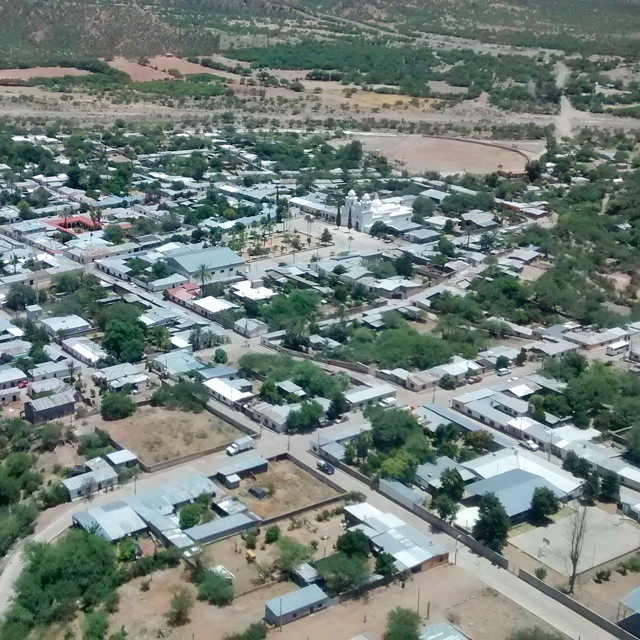
Don’t Know What I’m Selling
Miguel Teran is a farmer and former owner of La Ventana ranch. He sold his land to Bacanora Lithium for the Sonora Lithium Project. He asserts that the first explorations started back in 1994. Geologists came to the La Ventana ranch in government cars. They took some soil samples, came back 8 years later, measured the land and after that they never came back. Ten years ago, Bacanora Lithium carried out some studies. They drilled around 115 holes with the permission of Miguel and then they offered to buy the land.
I told them: you know what you’re buying, but I don’t know what I’m selling. Don’t take advantage of me. That’s how the negotiation started, but they wanted to pay as if it was a mere piece of land.”
Miguel wasn’t disappointed yet he acknowledges that he could have made a better deal as he has since found out what treasure lies in the 1,900 hectares that were sold and integrated into the Sonora Lithium Project. For the time being and until the mineral is extracted, Miguel may allow his cows to graze there as stipulated in the contract.
I am within my rights until I get in the way, but I have already bought some land.” Finally, he adds, “sometimes my car battery would fail and they would tell me that I had lithium here, but I only know about horses and chickens; not lithium.”

The Trauma of Our Technological Selves
As a city-dweller, my experience with Nature has been for the most part parks and decorative gardens. Since I live so disconnected from the land itself, I can only enter into relationship with my own species, our creations and the animals we call pets. For a long time I’ve been scared of insects and even though working in a garden has helped diminish the feeling, I still feel uncomfortable in certain scenarios. Soil and its minerals are even weirder to me, because I had never considered them something other than a resource, a component that can be used for my benefit through technology. They don’t seem alive, they don’t seem to have any other purpose than sitting there for us to transform them into something else.
Perhaps my biggest realization during my journey to connect with the land is the enormous damage that Capitalism, Colonialism and Industrialism have inflicted on the planet. It has reached the point that we are also physically, psychologically, emotionally and spiritually bent and broken enough for us to barely notice the indifference and violence around us. Indifference and violence done to each other and to ourselves. And yet, those who notice don’t always take action. Even less, those who know and take action don’t have a clear idea, much less a strategy to stop the abuse.
This is not something that modern technology can fix. Not the electric cars, not the solar cells nor the electric batteries. Not the tote bags and the bamboo toothbrushes that you can use as compost. Our home is being gutted and we just stand there watching, unsure on what to do. When you actually want to stop a killer, you go ahead and do it. You don’t offer knives from recycled metal or whips made out of hemp. You go ahead and put an end to the abuse by neutralizing any capacity to inflict damage that the perpetrator might have. You stop the killing, you stop the behavior, you commit yourself to do so.
Today I read that only 3% of world’s ecosystems remain intact. Civilization is going down regardless of what we do. Nothing can grow indefinitely without collapsing. The real question is what will be left when our civilization goes down. Our struggle resides in stopping it before there is nothing left.
Cristopher Straffon Marquez a.k.a. Straquez is a theater actor and language teacher currently residing in Tijuana, Baja California, Mexico. Artist by chance and educator by conviction, Straquez was part of the Zeitgeist Movement and Occupy Tijuana Movement growing disappointed by good intentions misled through dubious actions. He then focused on his art and craft as well as briefly participating with The Living Theatre until he stumbled upon Derrick Jensen’s Endgame and consequently with the Deep Green Resistance: Strategy to Save the Planet both changing his mind, heart and soul. Since then, reconnecting with the land, decolonizing the mind and fighting for a living planet have become his goals.
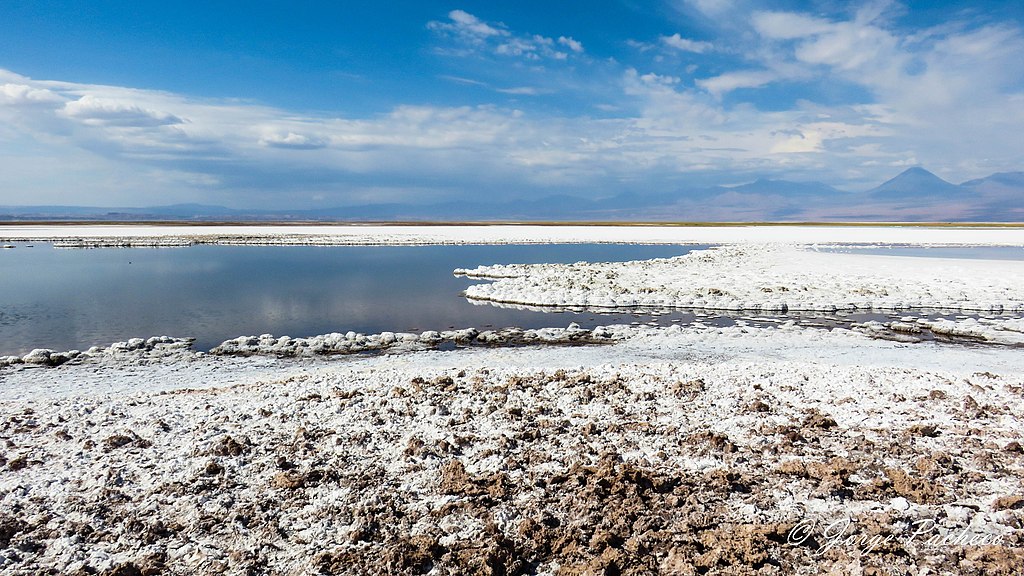
by DGR News Service | May 8, 2021 | Biodiversity & Habitat Destruction, Colonialism & Conquest, Education, Mining & Drilling, Strategy & Analysis, Toxification
By Straquez
Mine is the Ignorance of the Many
I was born in Mexico City surrounded by big buildings, a lot of cars and one of the most contaminated environments in the world. When I was 9 years old my family moved to Tijuana in North West Mexico and from this vantage point, on the wrong side of the most famous border town in the world, I became acquainted with American culture. I grew up under the American way of life, meaning in a third-world city ridden with poverty, corruption, drug trafficking, prostitution, industry and an immense hate for foreigners from the South.
Through my school years, I probably heard a couple of times how minerals are acquired and how mining has brought “prosperity” and “progress” to humanity. I mean, even my family name comes from Cornwall, known for its mining sites. The first Straffon to arrive from England to Mexico did so around 1826 in Real del Monte in the State of Hidalgo (another mining town!). However, it is only recently, since I have started following the wonderful work being done in Thacker Pass by Max Wilbert and Will Falk that the horrors of mining came into focus and perspective.
What is mining? You smash a hole in the ground, go down the hole and smash some more then collect the rocks that have been exposed and process them to make jewelry, medicines or technology. Sounds harmless enough. It’s underground and provides work and stuff we need, right? What ill could come out of it? After doing some digging (excuse the pun), I feel ashamed of my terrible ignorance. Mine is the ignorance of the many. This ignorance is more easily perpetuated in a city where all the vile actions are done just so we can have our precious electronics, vehicles and luxuries.
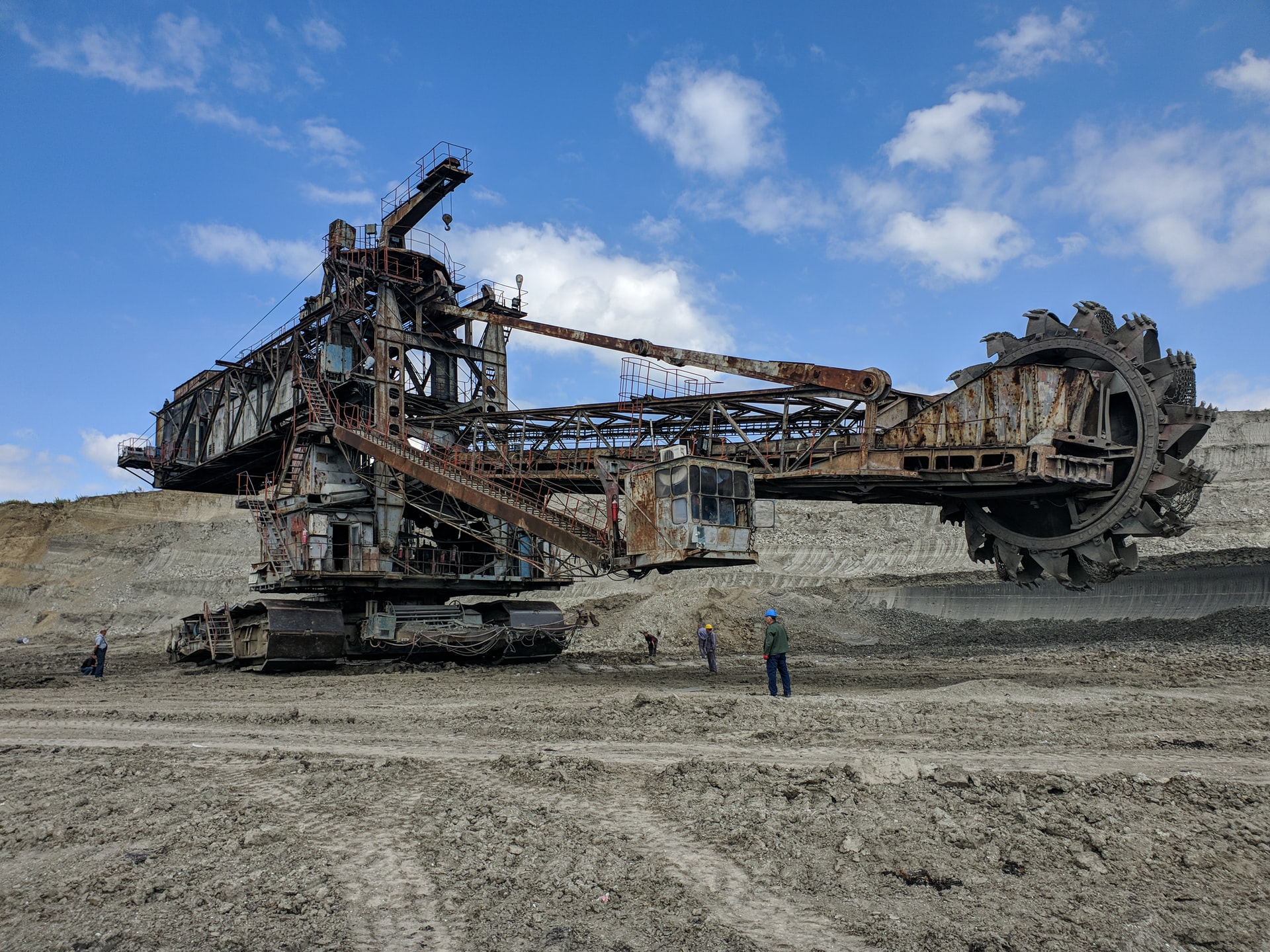
Mine Inc.
Mining, simply put, is the extraction of minerals, metals or other geological materials from earth including the oceans. Mining is required to obtain any material that cannot be grown or artificially created in a laboratory or factory through agricultural processes. These materials are usually found in deposits of ore, lode, vein, seam, reef or placer mining which is usually done in river beds or on beaches with the goal of separating precious metals out of the sand. Ores extracted through mining include metals, coal, oil shale, gemstones, calcareous stone, chalk, rock salt, potash, gravel, and clay. Mining in a wider sense means extraction of any resource such as petroleum, natural gas, or even water.
Mining is one of the most destructive practices done to the environment as well as one of the main causes of deforestation. In order to mine, the land has to be cleared of trees, vegetation and in consequence all living organisms that depend on them to survive are either displaced or killed. Once the ground is completely bare, bulldozers and excavators are used to smash the integrity of the land and soil to extract the metals and minerals.
Mining comes in different forms such as open-pit mining. Like the name suggests, is a type of mining operation that involves the digging of an open pit as a means of gaining access to a desired material. This is a type of surface mining that involves the extraction of minerals and other materials that are conveniently located in close proximity to the surface of the mining site. An open pit mine is typically excavated with a series of benches to reach greater depths.
Open-pit mining initially involves the removal of soil and rock on top of the ore via drilling or blasting, which is put aside for future reclamation purposes after the useful content of the mine has been extracted. The resulting broken up rock materials are removed with front-end loaders and loaded onto dump trucks, which then transport the ore to a milling facility. The landscape itself becomes something out of a gnarly science-fiction movie.
Once extracted, the components are separated by using chemicals like mercury, methyl-mercury and cyanide which of course are toxic to say the least. These chemicals are often discharged into the closest water sources available –streams, rivers, bays and the seas. Of course, this causes severe contamination that in turn affects all the living organisms that inhabit these bodies of water. As much as we like to distinguish ourselves from our wild kin this too affects us tremendously, specially people who depend on the fish as their staple food or as a livelihood.
One of the chemical elements that is so in demand in our current economy is Lithium. Lithium battery production today accounts for about 40% of lithium mining and 25% of cobalt mining. In an all-battery future, global mining would have to expand by more than 200% for copper, by a minimum of 500% for lithium, graphite, and rare earths, and far more for cobalt.
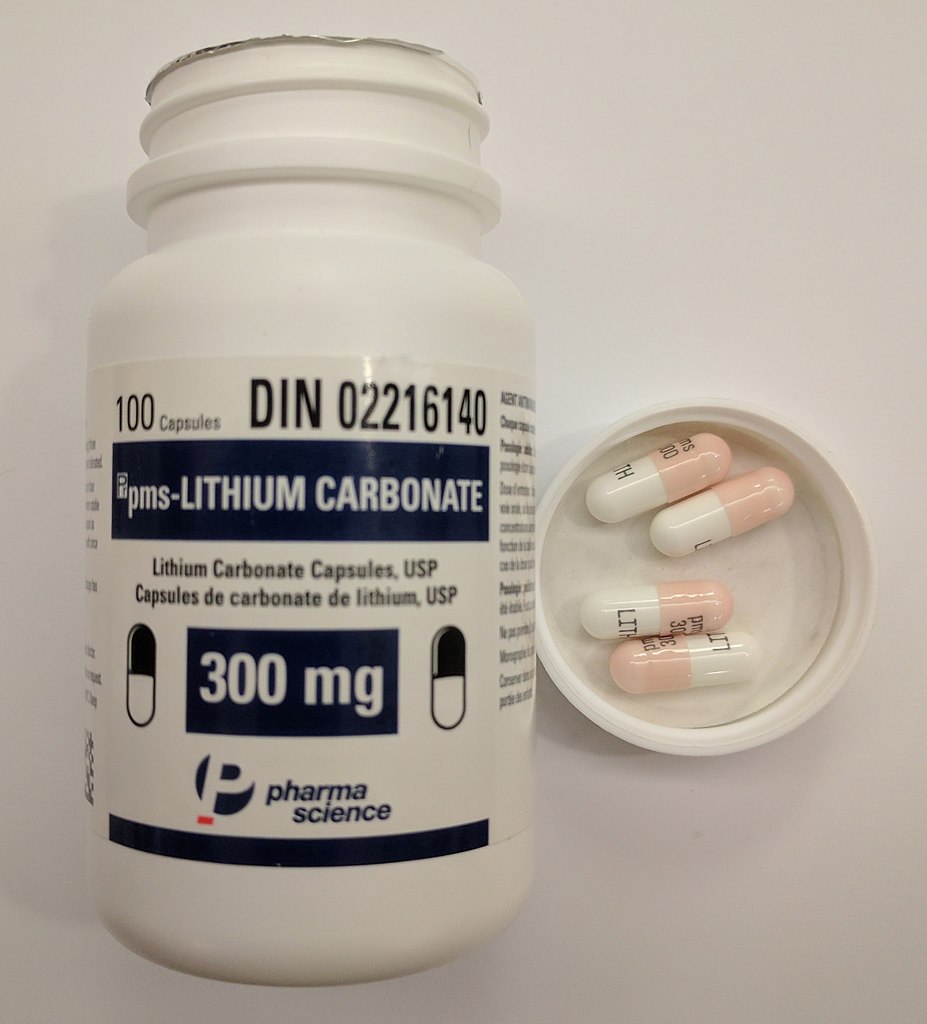
Lithium – Isn’t that a Nirvana song?
Lithium is the lightest metal known and it is used in the manufacture of aircraft, nuclear industry and batteries for computers, cellphones, electric cars, energy storage and even pottery. It also can level your mood in the form of lithium carbonate. It has medical uses and helps in stabilizing excessive mood swings and is thus used as a treatment of bipolar disorder. Between 2014 and 2018, lithium prices skyrocketed 156% . From 6,689 dollars per ton to a historic high of 17,000 dollars in 2018. Although the market has been impacted due to the on-going pandemic, the price of lithium is also rising rapidly with spodumene (lithium ore) at $600 a ton, up 40% on last year’s average price and said by Goldman Sachs to be heading for $676/t next year and then up to $707/t in 2023.
Lithium hydroxide, one of the chemical forms of the metal preferred by battery makers, is trading around $11,250/t, up 13% on last year’s average of $9978/t but said by Goldman Sachs to be heading for $12,274 by the end of the year and then up to $15,000/t in 2023. Lithium is one of the most wanted materials for the electric vehicle industry along cobalt and nickel. Demand will only keep increasing if battery prices can be maintained at a low price.
Simply look at Tesla’s gigafactory in the Nevada desert which produces 13 million individual cells per day. A typical Electronic Vehicle battery cell has perhaps a couple of grams of lithium in it. That’s about one-half teaspoon of sugar. A typical EV can have about 5,000 battery cells. Building from there, a single EV has roughly 10 kilograms—or 22 pounds—of lithium in it. A ton of lithium metal is enough to build about 90 electric cars. When all is said and done, building a million cars requires about 60,000 tons of lithium carbonate equivalent (LCE). Hitting 30% penetration is roughly 30 million cars, works out to about 1.8 million tons of LCE, or 5 times the size of the total lithium mining industry in 2019.
Considering that The United States-Mexico-Canada Agreement (USMCA) is being negotiated, lithium exploitation is a priority as a “must be secured” supply chain resource for the North American corporate machine. In 3 years, cars fabricated in these three countries must have at least 75% of its components produced in the North American region so they can be duty-free. This includes the production of lithium batteries that could also become a profitable business in Mexico.

Sonora on Lithium
In the mythical Sierra Madre Occidental (“Western Mother” Mountain Range) which extends South of the United States, there is a small town known as Bacadéhuachi. This town is approximately 11 km away from one of the biggest lithium deposits in the world known as La Ventana. At the end of 2019, the Mexican Government confirmed the existence of such a deposit and announced that a concession was already granted on a joint venture project between Bacanora Minerals (a Canadian company) and Gangfeng Lithium (a Chinese company) to extract the coveted mineral. The news spread and lots of media outlets and politicians started to refer to lithium as “the oil of the future.”
I quote directly the from Bacanora Lithium website:
Sonora Lithium Ltd (“SLL”) is the operational holding company for the Sonora Lithium Project and owns 100% of the La Ventana concession. The La Ventana concession accounts for 88% of the mined ore feed in the Sonora Feasibility Study which covers the initial 19 years of the project mine life. SLL is owned 77.5% by Bacanora and 22.5% by Ganfeng Lithium Ltd.
Sonora holds one of the world’s largest lithium resources and benefits from being both high grade and scalable. The polylithionite mineralisation is hosted within shallow dipping sequences, outcropping on surface. A Mineral Resource estimate was prepared by SRK Consulting (UK) Limited (‘SRK’) in accordance with NI 43-101.”
The Sonora Lithium Project is being developed as an open-pit strip mine with operation planned in two stages. Stage 1 will last for four years with an annual production capacity of approximately 17,500t of lithium carbonate, while stage 2 will ramp up the production to 35,000 tonnes per annum (tpa). The mining project is also designed to produce up to 28,800 tpa of potassium sulfate (K2SO4), for sale to the fertilizer industry.
On September 1st, 2020, Mexico’s President, Andres Manuel Lopez Obrador, dissolved the Under-secretariat of Mining as part of his administration’s austerity measures. This is a red flag to environmental protection as it creates a judicial void which foreign companies will use to allow them greater freedom to exploit more and safeguard less as part of their mining concession agreements.
Without a sub-secretariat, mediation between companies, communities and environmental regulations is virtually non-existent. Even though exploitation of this particular deposit had been adjudicated a decade ago under Felipe Calderon’s administration, the Mexican state is since then limited to monitoring this project. This lack of regulatory enforcement will catch the attention of investors and politicians who will use the situation to create a brighter, more profitable future for themselves and their stakeholders.
To my mind there is a bigger question – how will Mexico benefit from having one of the biggest deposits of lithium in the world? Taking into account the dissolution of the Mining sub-secretariat and the way business and politics are usually handled in Mexico, I do wonder who will be the real beneficiaries of the aforementioned project.
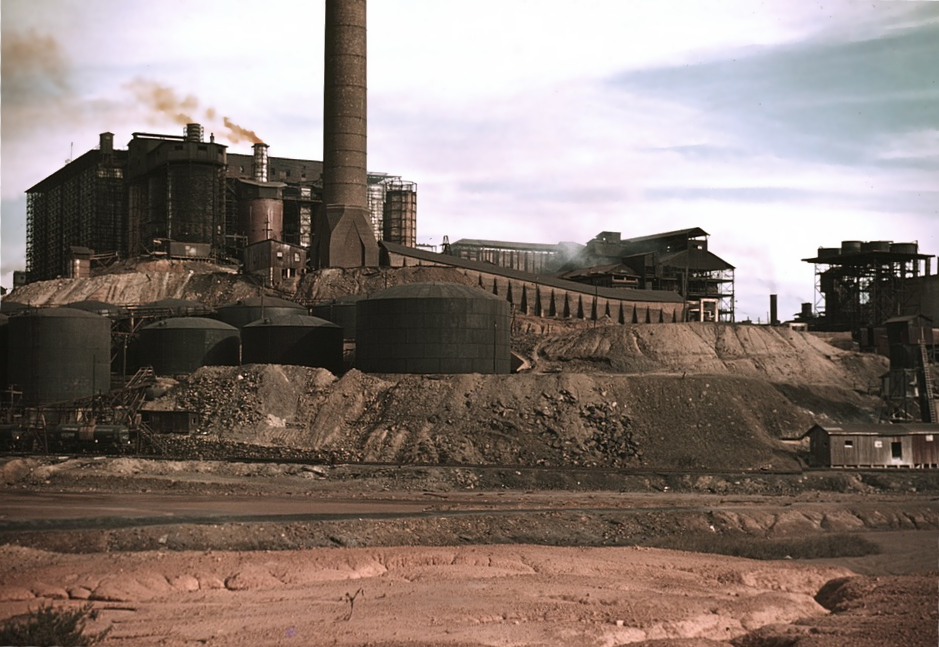
Extra Activism
Do not forget, mining is an integral part of our capitalist economy; mining is a money making business – both in itself and as a supplier of materials to power our industrial civilization. Minerals and metals are very valuable commodities. Not only do the stakeholders of mining companies make money, but governments also make money from revenues.
There was a spillage in the Sonora river in 2014. It affected over 22,000 people as 40 million liters of copper sulfate were poured into its waters by the Grupo Mexico mining group. Why did this happen? Mining companies are run for the profit of its stakeholder and it was more profitable to dump poison into the river than to find a way to dispose it with a lower environmental impact. Happily for the company stakeholders, company profit was not affected in the least.
Even though the federal Health Secretariat in conjunction with Grupo México announced in 2015 the construction of a 279-million-peso (US $15.6-million) medical clinic and environmental monitoring facility to be known as the Epidemiological and Environmental Vigilance Unit (Uveas) to treat and monitor victims of the contamination, until this day it has not been completed. The government turned a blind eye to the incident after claiming they would help. All the living beings near the river are still suffering the consequences.
Mining is mass extraction and this takes us to the practice of “extractivism” which is the destruction of living communities (now called “resources”) to produce stuff to sell on the world market – converting the living into the dead. While it does include mining – extraction of fossil fuels and minerals below the ground, extractivism goes beyond that and includes fracking, deforestation, agro-industry and megadams.
If you look at history, these practices have deeply affected the communities that have been unlucky enough to experience them, especially indigenous communities, to the advantage of the so-called rich. Extractivism is connected to colonialism and neo-colonialism; just look at the list of mining companies that are from other countries – historically companies are from the Global North. Regardless of their origins, it always ends the same, the rich colonizing the land of the poor. Indigenous communities are disproportionately targeted for extractivism as the minerals are conveniently placed under their land.
While companies may seek the state’s permission, even work with them to share the profits, they often do not obtain informed consent from communities before they begin extracting – moreover stealing – their “resources”. The profit made rarely gets to the affected communities whose land, water sources and labor is often being used. As an example of all of this, we have the In Defense of the Mountain Range movement in Coatepec, Veracruz. Communities are often displaced, left with physical, mental and spiritual ill health, and often experience difficulties continuing with traditional livelihoods of farming and fishing due to the destruction or contamination of the environment.
Cristopher Straffon Marquez a.k.a. Straquez is a theater actor and language teacher currently residing in Tijuana, Baja California, Mexico. Artist by chance and educator by conviction, Straquez was part of the Zeitgeist Movement and Occupy Tijuana Movement growing disappointed by good intentions misled through dubious actions. He then focused on his art and craft as well as briefly participating with The Living Theatre until he stumbled upon Derrick Jensen’s Endgame and consequently with the Deep Green Resistance: Strategy to Save the Planet both changing his mind, heart and soul. Since then, reconnecting with the land, decolonizing the mind and fighting for a living planet have become his goals.














